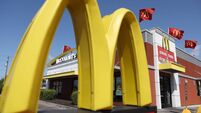Threat of nuclear meltdown rises after third explosion
The third explosion followed two earlier blasts at Unit 1 and Unit 3 reactors. The fresh explosion is believed to have occurred at the Unit 2 reactor.
There was no immediate update on the damage caused by the explosion but reports last night said part of one of the containers of one the reactors may be damaged raising the spectre of possible serious radiation leaks.
Other reports also suggested there was increased radiation levels being detected between the plant and Tokyo, a distance of approximately 200 kilometres.
The operators of the plant confirmed that all non-essential staff at the plant were being evacuated.
The troubles in the Fukushima Dai-ichi plant compounded the immense challenges faced by the Tokyo government, already struggling to send relief to hundreds of thousands of people along the country’s ravaged coast where at least 10,000 people are believed to have died.
Later, a top Japanese official said the fuel rods in all three of the most troubled nuclear reactors appeared to be melting.
Of all these troubles, the drop in water levels at Unit 2 had officials the most worried.
“Units 1 and 3 are at least somewhat stabilised for the time being,” said Nuclear and Industrial Agency official Ryohei Shiomi earlier. “Unit 2 now requires all our effort and attention.”
The earlier explosion at Unit 3 was not as dire as it seemed. The blast actually lessened pressure building inside the troubled reactor, and officials said the all-important containment shell — thick concrete armour around the reactor — had not been damaged. In addition, officials said radiation levels remained within legal limits, though anyone within 20km of the scene was ordered to remain indoors.
“We have no evidence of harmful radiation exposure,” said deputy Cabinet secretary Noriyuki Shikata.
On Saturday, a similar hydrogen blast destroyed the housing around the complex’s Unit 1 reactor, leaving the shell intact but resulting in the mass evacuation of more than 185,000 people from the area.
Late last night, the chief government spokesman said there were signs that the fuel rods were melting in all three reactors, all of which had lost their cooling systems in the wake of Friday’s massive earthquake and tsunami
“Although we cannot directly check it, it’s highly likely happening,” Chief Cabinet Secretary Yukio Edano told reporters.
Some experts would consider that a partial meltdown. Others, though, reserve that term for times when nuclear fuel melts through a reactor’s innermost chamber but not through the outer containment shell.
Officials held out the possibility that that, too, may be happening.
“It’s impossible to say whether there has or has not been damage” to the vessels, nuclear agency official Naoki Kumagai said.
If a complete reactor meltdown — where the uranium core melts through the outer containment shell — were to occur, a wave of radiation would be released, resulting in major, widespread health problems.
Yesterday morning’s explosion at the Fukushima Dai-ichi plant’s Unit 3 injured 11 workers and came as authorities were trying to use sea water to cool the complex’s three reactors.
While four Japanese nuclear complexes were damaged in the wake of Friday’s twin disasters, the Dai-ichi complex has been the focus of most of the worries over Japan’s nuclear crisis.
Operators knew the sea water flooding would cause a pressure build-up in the reactor containment vessels — and potentially lead to an explosion — but felt they had no choice if they wanted to avoid complete meltdowns. Eventually, hydrogen in the released steam mixed with oxygen in the atmosphere and set off the two blasts.
Japan’s meteorological agency did report one good sign. It said the prevailing wind in the area of the stricken plant was heading east into the Pacific, which experts said would help carry away any radiation.
Across the region, though, many residents expressed fear over the situation.
People in the port town of Soma had rushed to higher ground after a tsunami warning Monday — a warning that turned out to be false alarm — and then felt the earth shake from the explosion at the Fukushima reactor 40km away. Authorities there ordered everyone to go indoors to guard against possible radiation contamination.
“It’s like a horror movie,” said Kyoko Nambu, 49, as she stood on a hillside overlooking her ruined hometown. “Our house is gone and now they are telling us to stay indoors.
“We can see the damage to our houses, but radiation? We have no idea what is happening. I am so scared.”











